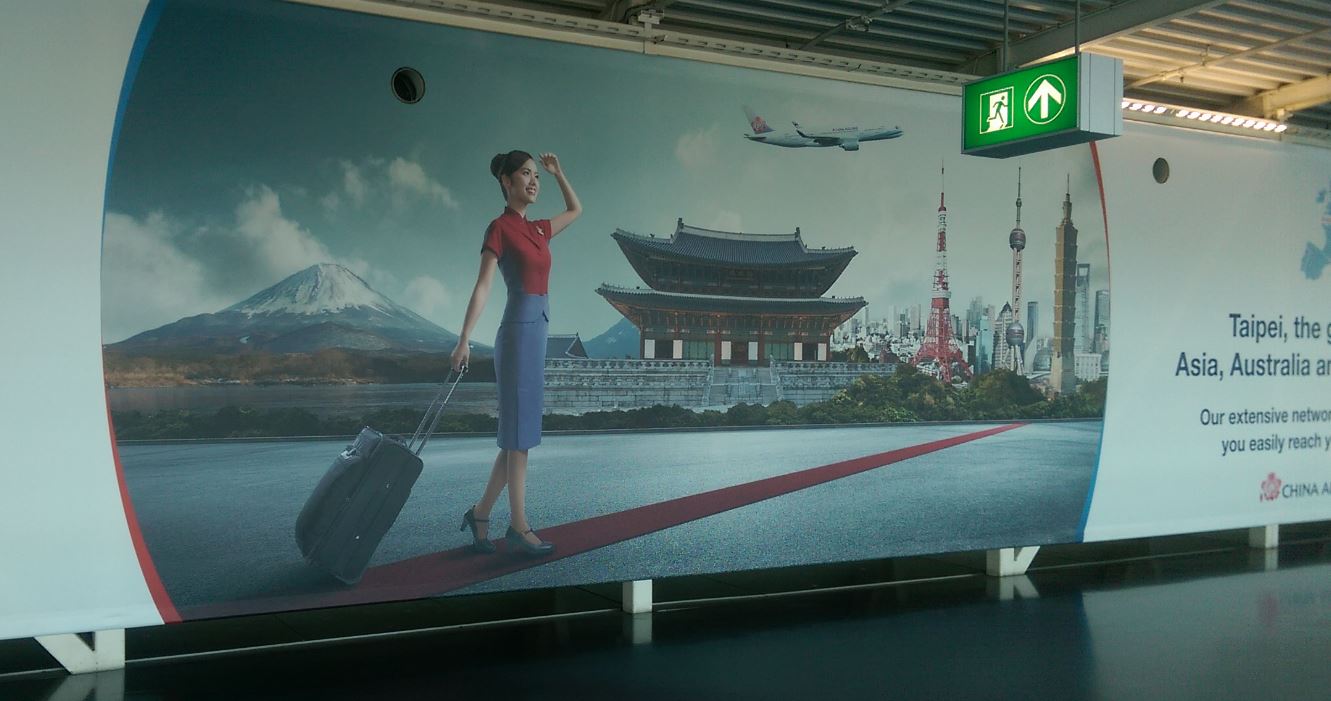The long tail of Academic art
Joep LeerssenI was struck by this mural ad for China Airways in Schiphol airport.
Its hyperrealistic style, with sharp contours and primary colours, recalled socialist-realist propaganda posters of the Mao era but also the glamour photographs of glossy magazines. Both go back, I believe, to an art style I call Academic Romanticism (explained in ERNiE): the traditional classical art forms taught in the European art academies, inflected by the Romantic fresco revival of the Nazarenes. Murals in 19th-century Germany are a prime example. Academic Romanticism survived as a style for government commissions and for the upper-middle-class conservative public, at a time when artists were already developing into Impressionism and beyond. The last vestiges of Academic Romanticism were the easy-on-the-eye glamour of totalitarian art, and, as some have pointed out, glamour photography for Holywood and glossy magazines. While its patron in the 19th century was the nation state, in the 20th century Academic Romanticism thrives under the twin patronage of totalitarianism and corporate capitalism.